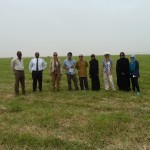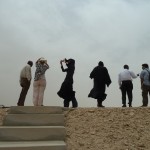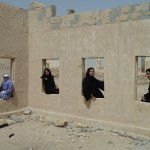Hello world!
Welcome to the Design and Regeneration Blog of the Masters in Urban Planning and Design at the Department of Architecture and Urban Planning
This blog is part of the requirements of an elective course – MUPD 653 Design and Regeneration – taught by Dr. Anna Grichting, Assistant Professor in the Spring Semester 2012.
Design and Regeneration:
Renaissance, Remediation, Renewal, Redevelopment, Re-urbanization, Revitalization, Reimagining, Retrofitting, Reconstruction, Restoration, Reactivating, Reinstating, Recycling, Reorienting – all are words that describe processes of regenerating cities and landscapes. Urban and rural regeneration may be induced by different drivers or catalysts – namely the improvement of neighborhoods, the introduction of art and culture, the construction of iconic architecture, the reactivating of ecologies, the restoring of landscapes and archaeologies, the recycling of transport and industrial infrastructures, the revitalization of communities and economies, amongst others. The results of these processes are not always positive, and the upgrading of the urban realm can induce gentrification, that is the increase in land values, and the expropriation of lower income residents. Nevertheless, good cities are dynamic, and constantly reinventing themselves and we must learn to evaluate both the long and short term legacies of urban interventions, as well as the positive and negative effects. The course looks at present examples of regeneration through varied lenses and in different geographical and morphological contexts. The Masters candidates will conduct research and develop regeneration concepts in Qatar or the region.
Re-Generation Design. Qatar Perspectives
The Masters candidates were asked to select one from a series of proposed sites which included different urban and rural contexts and varied types of regeneration: Abu Nakhla Reservoir – Ecological Remediation; West Bay – Retrofitting of public space and buildings: Al Jumail Village – Archeological Restoration and Cultural Reactivation; Al Thakira Village and Mangrove park – Cultural Revitalisation and Ecological Regeneration; Workers Labour Camps – Social Revitalization and Physical Reurbanization.
Site visits were conducted with all the class members and some experts, and the Masters candidates developed regeneration scenarios – developing future visions and strategies for their locations, that also included the planned developments of the National and City Master Plans as well as Cultural strategies of the QMA and the social and environmental guidelines of the Qatar National Vision.
The proposed plans include: alternative design and implementation scenarios; Strategies to implement the concept(s); Identification of the Stakeholders involved. They proposals are presented in a short video that includes the documentation from the field work, input from the course lectures and readings, and the design scenarios and strategies.
One of the objectives of the course is also to discuss what Regeneration means in an emerging Metropolis such as Doha and in a fast-growing economy like Qatar. What is history and historical in this cultural context? What does it mean to remediate recently constructed buildings and landscapes? These discussions will mark the completion of the course and will build on the Masters candidates projects and the course contents.




